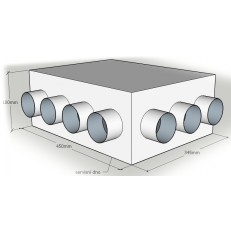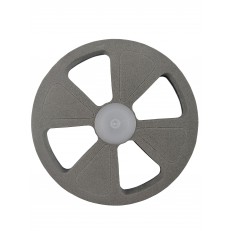Filters and recovery during the COVID-19 pandemic

Due to the increasing number of questions on this topic, we bring you an article and a kind of guidance in times of uncertainty.
Filters vs. SARS-CoV-2 coronavirus
Practically no common air-conditioning filter can capture 100% of all viruses. However, according to the classification of air filters according to ČSN EN 1822:2010, we can read the efficiency of higher filtration classes and whether they could help against the coronavirus.

For a better idea, we will give an example. If we take the assumed virus size of 0.112 µm in the exposure of e.g. 10,000 of these viruses and use a HEPA H13 filter, only 5 viruses will pass through the filter purely statistically. However, we do not know the possible exposure and assume that it will be significantly lower, then the HEPA filter appears to be very suitable.
F7 filters capture particles from 0.4 µm in size, i.e. 4 times larger than the virus itself. However, if the virus binds to dust particles in the air, filters of this class will stop very fine dust and at least slow down the virus. That is why it is necessary to change the filter, e.g. in masks!
In general, it can be summarized that some filtration is always better than none. That is ingesting and filtering F or G is better than nothing.
Pay attention to hygiene when changing filters!!!
Ventilation system with recovery vs. SARS-CoV-2 coronavirus
If you have doubts about the cleanliness of the outdoor air and you have the option of incorporating a HEPA filter into the recuperation system, it is best to plaster it or glue it to the filter box or the frame in the place of the unit's filter, depending on the situation, in order to maintain its effectiveness. However, this measure should be addressed only in very rare cases of installed forced ventilation systems in family houses or apartments. An example of such a case can be e.g. air intake directly from a busy street near a public transport stop. Another possible measure can be the adjustment of the operating time of the unit depending on the possible intake of harmful air.
It therefore follows from the above that lower filtration classes such as G or F capture the virus with even less efficiency and for a limited time before it falls, but for normal installations in family houses, where there is no risk of inhaling infectious air, these filtrations are enough and it is still much more better than no filtration and window ventilation.
We had a question about whether the increased multiplicity of ventilation can so-called dilute the infectious air in the interior. From the logic of the matter, this is so, thanks to the fact that the fresh air supplied does not meet the extracted air, so there is no risk of fresh air pollution. On the other hand, increased air velocity can increase the speed of air movement carrying the virus from overpressured rooms (office) to underpressured rooms (corridor). It all depends on the distribution of the outlets.
Regarding ventilation with recuperation, we therefore recommend to ventilate as you normally would with regard to humidity and CO2 concentration.
Ventilate so you don't have stale air!
Cheers to everyone!
Listen to the orders of the government and hygienists. The article only summarizes our findings and is an independent recommendation from the perspective of air-conditioning engineers.
We are not epidemiologists, scientists or doctors.
published 18/03/2020 - Luftuj team Ing. Tomáš Trávníček and Ing. Pavla Skalická














